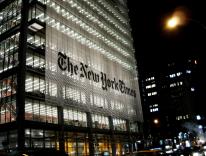Jazz, the musician Matt Glaser opines at one point in Ken Burns’s reverent new documentary film Jazz, "is the ultimate temporal art form. It’s about the human experience of time." Time-a lot of it-is certainly at issue in the latest Burns-directed opus that PBS broadsides this month. The ten-part film (it started January 8) racks up a nearly nineteen-hour running time, all told-an eye-popping length if you’re not a jazz junkie; a reasonable one if you are and if you factor in the seventy-five interviews, five-hundred-odd musical selections, twenty-four-hundred photographic stills, and two thousand archival film clips that the filmmakers have crammed in.
Kicking off in nineteenth-century New Orleans, where African-American spirituals and a potpourri of other musical genres gave birth to jazz, the documentary strolls thoughtfully through the decades, paying leisurely tribute to the childhood, training, stylistic originality, career fluctuations, marriages, and personal idiosyncrasies of seminal performers and composers, from pianist Jelly Roll Morton (who claimed to have invented jazz) on. While tunes, riffs, and narration ebb and flow on the soundtrack, the camera pans across historical photographs, or yields to original film sequences, many of them fascinating to contemplate in their own right. We see adorably antiquated cars parked on sepia-tinged streets; railroad cars barreling across the country, freighted with exhausted musicians on tour; cavorting girls in bobby socks; jitterbugging policemen; trumpet valves gleaming in the hands of geniuses. And surfacing periodically, as reminders of art’s ever-symbiotic relationship with social forces, are images from historic upheavals like World War II, the civil-rights struggle, and protests over the Vietnam War.
Less visually catchy but more immediate are the talking heads-critics, historians, musicians, and relatives or intimates of musicians, ranging from pianist Dave Brubeck to Mercedes Ellington (granddaughter of Duke) to New York Times cultural pundit Margo Jefferson. These raptly enthusiastic commentaries, centering principally on the personal and musical style of jazz masters, are the real culprits behind Jazz’s marathon scope. Why use just one account of Ellington’s friendship with Billie ("Take the A Train") Strayhorn, when you can use two or three? Why provide a succinct overview of the last days of the heroin-addicted Charlie Parker, when numerous experts will chime in on the subject, at five times the length?
While their sheer mass may be overwhelming, the interviews do hew incisively into jazz’s musical and metaphysical foundations. True, the insights can get a little rarified now and again: Critic Gary Giddins calls Louis Armstrong "American music’s Dante," and trumpeter Wynton Marsalis compares Ellington to Dionysus. But usually the commentaries stick closer to earth, evoking character through colorful anecdotes-Parker’s stopping his car on a country road so that he could perform for a cow, for example-or illuminating the contributions specific musicians have made to the jazz tradition.
Most intriguing, the experts’ testimony sometimes cements the documentary’s principal theme: that jazz is the quintessentially American art form. On a basic level, to begin with, jazz has been a sort of musical melting pot, absorbing as many diverse stylistic influences as the country has nationalities and ethnicities-spirituals, minstrel shows, Caribbean rhythms, ragtime, and the classical training of Creole musicians excluded from orchestras by Jim Crow laws.
Moreover, as Burns’s interviewees repeatedly stress, good jazz functions like democracy at its best, encouraging individuality and self-expression while at the same time requiring serious teamwork. As Wynton Marsalis puts it in one of many conceptual tours de force he contributes to the documentary, "In American life we have all these different agendas. We have conflict all the time. And we’re attempting to achieve harmony through conflict....And that is what jazz music is." So it’s not surprising that jazz, which was heading out of its all-swing phase around World War II, was anathema to the Nazis, and even became a "resistance symbol" for the French, according to filmmaker Bertrand Tavernier.
Jazz being so very American-and the battles between art, commerce, and mores being so constant through space and time-it’s even less surprising that Burns’s documentary zooms in on cultural conflicts that are similar to today’s. Our era’s ongoing hoopla over violent and sexist rap lyrics, for example, recalls some of the alarmist reactions to swing, which was denounced as "a phallic symbol set to sound," as dangerous music that "acts as a narcotic." Both cases involve appalled elders warning that the new craze would corrupt the young and contaminate society-a sentiment that, in fact, pays a backhanded compliment to the potency of art.
The denunciations of swing, of course, ultimately proved futile (the antirap movement hasn’t exactly carried the day either), but as the clarinetist Artie Shaw observed, "Success is a big problem-bigger than failure." He was speaking from bitter experience, for his version of "Begin the Beguine" had enchanted audiences, who kept demanding that he play it-to the point that, Shaw complained, the song became "a millstone, an albatross around my neck!" Spotlighting this and similar anecdotes-for example, Louis Armstrong’s reluctant interpretations of "Hello Dolly!"-Jazz broods repeatedly on the tyranny of popular taste, a reality with which visionary artists must perpetually contend. It’s hard to make your living following the Muse if the public have flocked in the opposite direction, taking their wallets with them.
Creating innovative, aesthetically satisfying music in adverse circumstance is a heroic enterprise, the Burns documentary suggests. But the producers of Jazz, it must be said, have carried out a highly successful flirtation with Mammon. In honor of the TV series, Knopf has published a companion book: Jazz: A History of America’s Music, which costs $65. And Sony Music and the Verve Music Group have released a five-CD box set of jazz classics, plus twenty-two individual-artist compilations and a single-CD overview of jazz history "with selections handpicked by Mr. Burns himself." Those who can’t bother to trek deep into a record store in search of the overview recording may pick it up, along with a latte, at their local Starbucks, a sponsor of the series. The chain will carry the CD at three thousand stores nationwide.
Is all this, you may ask, in conflict or harmony with the lofty tone of the Burns documentary? Well, like jazz itself, it is probably both.
Please email comments to [email protected] and join the conversation on our Facebook page.
Share
Previous Story
Can Jews Trust Catholics?
Next Story
Abstinence, anyone?

